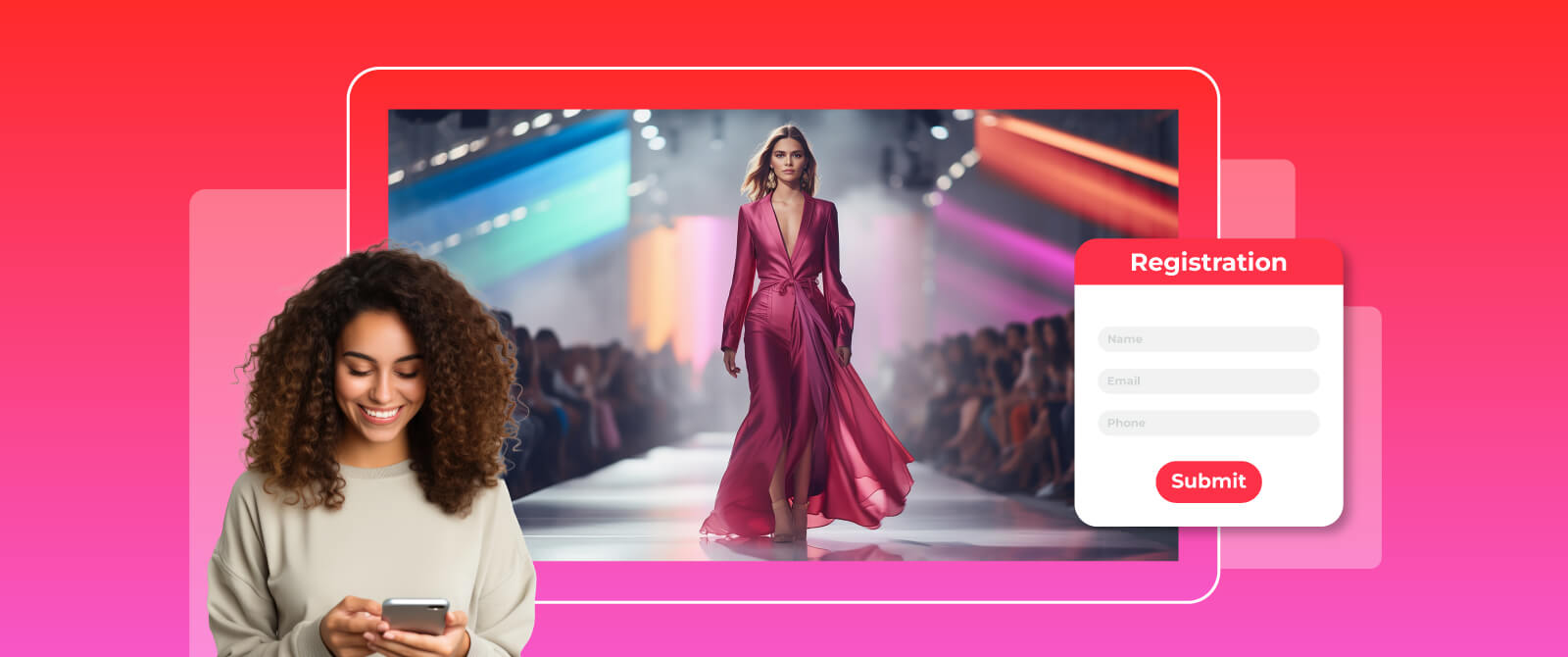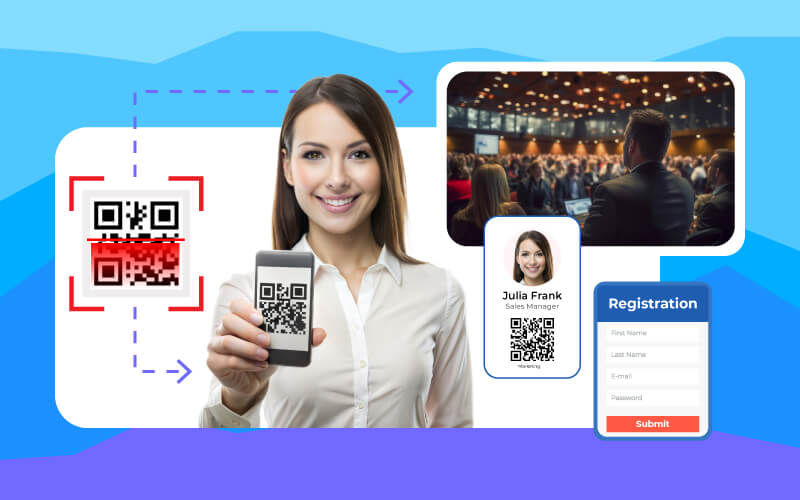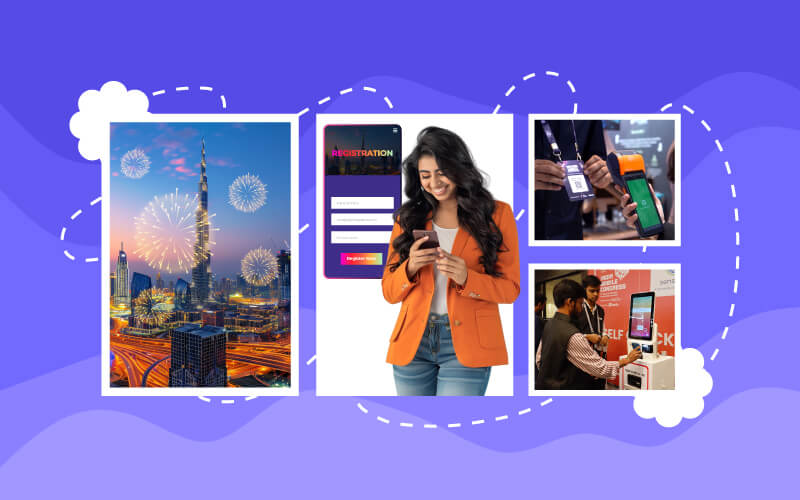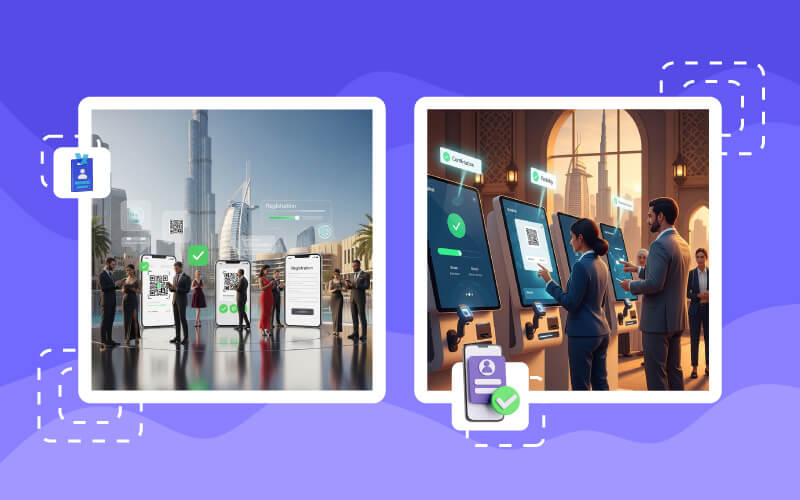Fashion shows are one of those iconic events where all the renowned designers and rising talents come together with merged creativity to present the latest collections. Not only do fashion show event involve meticulous planning but they’re also setting new standards with ongoing trends.
According to a study of fashion event market research, the global fashion events market size was valued at $33.6 billion in 2022 and is projected to reach $61.5 billion by 2032, growing at a CAGR of 5.3% from 2023 to 2032. But, as the fashion industry is involved, so are the methods of managing fashion shows.
In that scenario, event organizers might lack in seamless execution of the fashion show event. In this article, we will explore the fashion show event checklist to streamline the entire fashion show event management. So without further ado, let’s delve into it:
Fashion Show Event Management: The Complete Event Planning Checklist
“Every day is a fashion show and the world is the runway.” — Coco Chanel”
For organizing a successful fashion show event management along with top-notch strategies, it’s crucial to have a fashion event checklist. Having a complete fashion show execution planning ensures that every aspect of the fashion show is covered, from basic planning of runway tasks, and designer showcases to after-event show activities. Here’s the fashion show event checklist to consider:
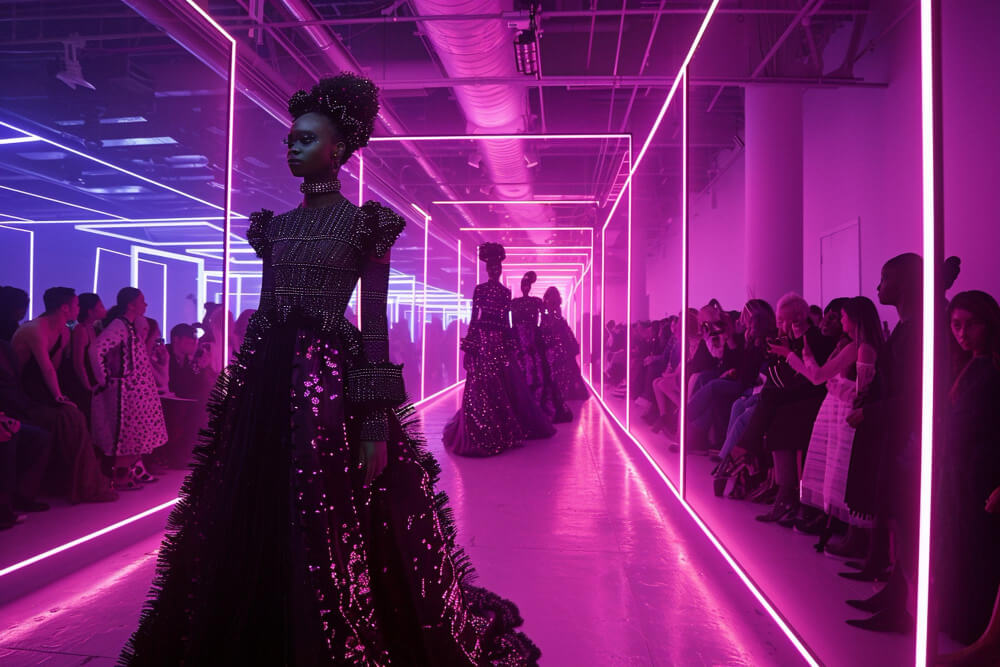
1. Define the Event Scope
- Event Type: Begin by determining the fashion show event type, whether it’s a designer’s new collection, a showcase of seasonal trends (spring/fall/winter) or an Industry trade show to feature multiple designers and brands with a focus on networking and business deals. Identifying the show type helps in a fashion show event budget management.
So, identify the type of event you want. Here are some of the best event types to consider:
- Designer Collection Launch: Showcasing a new designer’s latest collection
- Seasonal Trend Showcase: Highlighting upcoming fashion trends for spring/fall/winter
- Industry Networking Event: Creating a platform for designers, buyers, and influencers
- Charity Fashion Show: Combining fashion with social impact
- Emerging Designer Showcase: Providing a platform for new talent
- Set Clear Objectives and KPIs (Key Performance Indicators): After finalizing the type of event you want to host, it’s time for you to set clear goals, objectives and event success KPIs. Consider quantifiable goals such as:
- Number of attendees
- Media coverage reach
- Social media engagement
- Potential sales or business connections
- Sponsor satisfaction
- Budget adherence
- Audience: After finalizing the event type, identify the target audience for event success. This might include retailers or boutique owners, influencers for creating buzz, journalists, and bloggers for providing coverage, and based on the event’s exclusivity fashion enthusiasts can be the target audience too.
2. Fashion Event Show Venue Selection
- Event Location: Select a fashion show venue which aligns with the event’s theme and fits well with the expected number of models, staff, speakers and the rest of attendees. It can be an outdoor event or an indoor one, based on preferences. Consider the accessibility of the venue, and ensure everyone can reach it. Also, check for ample parking and public transportation options before finalizing.
** Don’t forget to add an aesthetic; chic, modern classic vibe to the event’s ambience for maximum engagement**
Read More: Tips for Streamlined Outdoor Event Management
- Venue Layout: While choosing the fashion show venue, consider the 3D layout diagramming for enhanced event flow and immersive attendee experience. Design a fashion runway that’s visible to all attendees, giving a nice view. For instance, consider T-shaped runways or circular runways for 360 views. Moreover, prioritize effective fashion show management by allocating front seats for VIPs and rest to manage guests and designating areas for media and photographers to capture the event.
** Don’t forget the backstage area! Provide ample space for models to change, hairdressers, stylists to work and event producers to coordinate.**
3. Fashion Show Event Registration Management
A fashion show management checklist is incomplete without the integration of seamless event registration management. For effective and successful fashion show events, it’s crucial to incorporate modern solutions while executing. Here is the explanation of the technology integration of a fashion show event registration management that streamlines the entire fashion show.
Event Registration Platform:

For smooth fashion show event registration, an efficient event ticketing system is crucial. Not only does a user-friendly online platform help event producers register attendees for fashion show events but also streamlines the entire management for models, judges, speakers, staff and other participants. In addition to this, a digital platform also provides a personalized event app for fashion show events which gives real-time updates to all the members.
- Create a customized registration webpage: After choosing the right event registration platform, it’s time for the creation of your dedicated event landing page where all the attendees can register easily and be a part of your event. Ensure that your web page has good visuals to capture the attention of attendees and it should clearly display every event-related information.
Quick Check-In Methods for Fashion Show Events:
Along with having an event registration platform, it’s equally important to implement advanced technologies to streamline the event check-in procedure and enhance security for attendees. Here are the event registration tools you can implement:
- Facial Recognition: For flawless fashion show event management, spice up the check-in methods by implementing facial recognition technology. It assures quick and secure access to events.
- QR Codes: Technology based on QR-code technology helps in sending QR codes to attendees when they’re done with event registration and further they can be scanned at the entrance. As a result, it reduces queues and streamlines the entire management process.
- RFID/NFC: Equip smart event badges or wristbands with the integration of RFID or NFC technology for seamless entry and real-time tracking of attendees.
- Turnstile Systems: Leverage the turnstiles to control entry points as it manages the flow of attendees efficiently and effortlessly.
- Onsite Badge Printing: Set up stations for badge printing at the fashion show’s venue and ensure that everyone has the correct identification. Category event name badges for models to access the runway areas, and judges, with access to judging panels and VIP zones. For the rest attendees print personalized event badges with seating information and access levels.
4. Marketing and Promotion
Don’t miss out on leveraging marketing and promotion strategies for fashion event shows.
- Social Media Campaigns:
Use the power of social media platforms like Instagram, Twitter, Threads, LinkedIn and Facebook to create buzz. Leverage behind-the-scenes, and glimpse collections to generate excitement. Also, use the broadcasting of fashion shows on social media to engage with a wider audience. Besides all, create fashion show-specific hashtags to encourage attendees to use them while sharing their experiences.
- Email Marketing:
Harness the power of email marketing and target potential attendees with personalized invites. Use the mobile event app to send push notifications and follow up with reminders as the event date approaches. Include key details and highlights of the fashion show. However, use email marketing post-event to gather feedback from the audience who attended the event.
- Set up live streaming channels:
Live streaming channels for fashion shows leverage digital platforms to broadcast runway events globally. By utilizing high-quality cameras, multi-angle setups, and interactive features across YouTube, Instagram, and specialized fashion streaming platforms, organizers can create immersive experiences that extend beyond physical venue limitations, engaging worldwide audiences with real-time designer collections and behind-the-scenes content.
- Partnerships:
For seamless fashion show event registration, collaborate with fashion influencers and media outlets for maximum exposure. Not only does it generate revenue but also reaches the target audience. For instance, add in your fashion event checklist:
- Strategize working with influencers to promote the event through their channels. offer exclusive content and early access to fashion enthusiasts
- Partner with fashion magazines, blogs, and TV channels for broader coverage and exposure.
- Find potential sponsors and engage with brands to provide additional resources and enhance the event experience.
5. Event Day Coordination
- Check-In Process:
When the final day of fashion shows arrives, streamline with mobile apps and QR badge scanning. Ensure that involved staff are well-trained with all the technologies and event check-in process. Use signage to navigate attendees to the check-in area and the rest of the venue.

- Fashion Show Runway Management:
On the actual day, make sure all the models are prepared with the necessary badges and information. Consider having a dedicated team to manage all model schedules, outfit changes and rehearsals. Moreover, for real-time communication among teams use headsets and mobile apps.
6. Post-Event Follow-Up
- Distribute Digital Feedback Surveys: Send out surveys to attendees, sponsors, and vendors to gather insights on what went well and what could be improved.
- Collect Media Coverage and Mentions: Gather all press releases, articles, social media mentions, and any other forms of media coverage to understand how the event was for everyone.
- Analyze Event Performance Metrics: Don’t miss out on reviewing key performance indicators (KPIs) like attendance numbers, revenue, engagement rates, and overall satisfaction.
- Document Lessons Learned: Note down insights and experiences from the event to inform future planning and avoid repeating any mistakes.
- Prepare Comprehensive Event Report: Compile all data, feedback, and analysis into a report for stakeholders, team members, and sponsors. This becomes important for gauging event performance in every aspect.
- Thank You Notes:
Follow up fashion show event registration and management by sending appreciation emails to attendees and participants. Address recipients by name and mention specific contributions or attendance highlights. Besides this, include information about upcoming events and how they can stay involved.
The Potential of Fashion Show Event Registration and Management System
Thinking about how modern fashion show event registration platforms provide a user-friendly interface in these shows? It allows attendees to sign up with ease while offering features like:
- Automated Confirmation Emails: Fashion show event registration platforms streamline the sign-up process for attendees and event producers as well. Attendees get automated confirmation emails immediately after their successful registration.
- Customizable Event Registration Forms: Leverage registration platforms to tailor event registration forms to collect specific information relevant to the fashion show (models, judges, stylists, staff, and the rest of attendees).
- Event CRM: For flawless fashion show event registration, a robust customer relationship management (CRM) system can be integrated with the event registration platform. It helps event producers manage relationships with all participants while allowing better communication, personalized interactions, and efficient data management.
- AR/VR Integration: AR and VR technologies provide immersive experiences that go beyond traditional fashion shows. Virtual runways enable remote attendees to participate as if they were present, while interactive features allow for detailed views and interactions with garments and models.
- Live Streaming For Virtual Audience: Modern digital event registration system offers features like live streaming which extends the reach of the fashion show to a global audience. However, interactive features such as live chats and polls keep virtual audiences engaged, creating a dynamic and participatory experience.
- Secure Payment Processing: Having secure payment gateways adds another layer of convenience. It makes it easier for attendees to buy tickets and organizers can also manage transactions.
That’s how a event registration and management systems significantly enhance the efficiency and engagement of fashion events by making them more accessible and enjoyable for all participants.
Read More: How to Craft the Perfect Event Registration Form?
Summing Up:
By the end of this blog, it’s clear that to enhance efficiency and elevate attendee experiences, the interaction of advanced technologies is a must. Be it facial recognition QR badges to AR/VR and live streaming, all these innovations and event check-in methods are reshaping the landscape of fashion events. Whether you’re planning an in-person event or virtual event, for seamless execution a registration and ticketing platform is required. Therefore, by leveraging above-mentioned fashion event checklist and incorporation of technologies and integration with platforms, event organizers can ensure a seamless, secure, and engaging experience for all participants while setting new standards in the industry.
For event producers looking to stay ahead of the curve, adopting the above-mentioned fashion event checklist along with technologies is not just an option but a necessity. So why wait? Embrace the future of fashion show registrations and take your events to the next level.

Frequently Asked Questions
What’s the ideal timeline for planning a fashion show?
Typically 6-9 months in advance, allowing time for venue booking, designer curation, marketing, and detailed logistics.
How much does a professional fashion show cost?
Costs range from $50,000 to $500,000, depending on venue, designers, production quality, and event scale.
How many models are needed for a successful runway show?
10-20 models are standard, with 15 being the optimal number for a mid-sized professional fashion show.
What technologies improve fashion show management?
Use QR codes, facial recognition, RFID badges, digital registration platforms, and real-time communication apps.
How do I create effective event ticketing?
Develop tiered tickets (VIP, General, Press, Industry), offer unique benefits, and use secure online platforms.
What are key marketing strategies for fashion shows?
Leverage social media, collaborate with influencers, use targeted email marketing, and create event-specific hashtags.
How long does a typical fashion show last?
Most runway shows range from 30-45 minutes, with some extended events lasting up to 90 minutes.
What should be included in a fashion show budget?
Include venue, production, marketing, talent fees, technical equipment, and a 10-15% contingency fund.
How do I select the right venue?
Consider capacity, accessibility, layout, technical capabilities, aesthetic alignment, and potential for runway design.
What post-event activities are crucial?
Conduct feedback surveys, analyze performance metrics, maintain stakeholder relationships, and document lessons learned.


